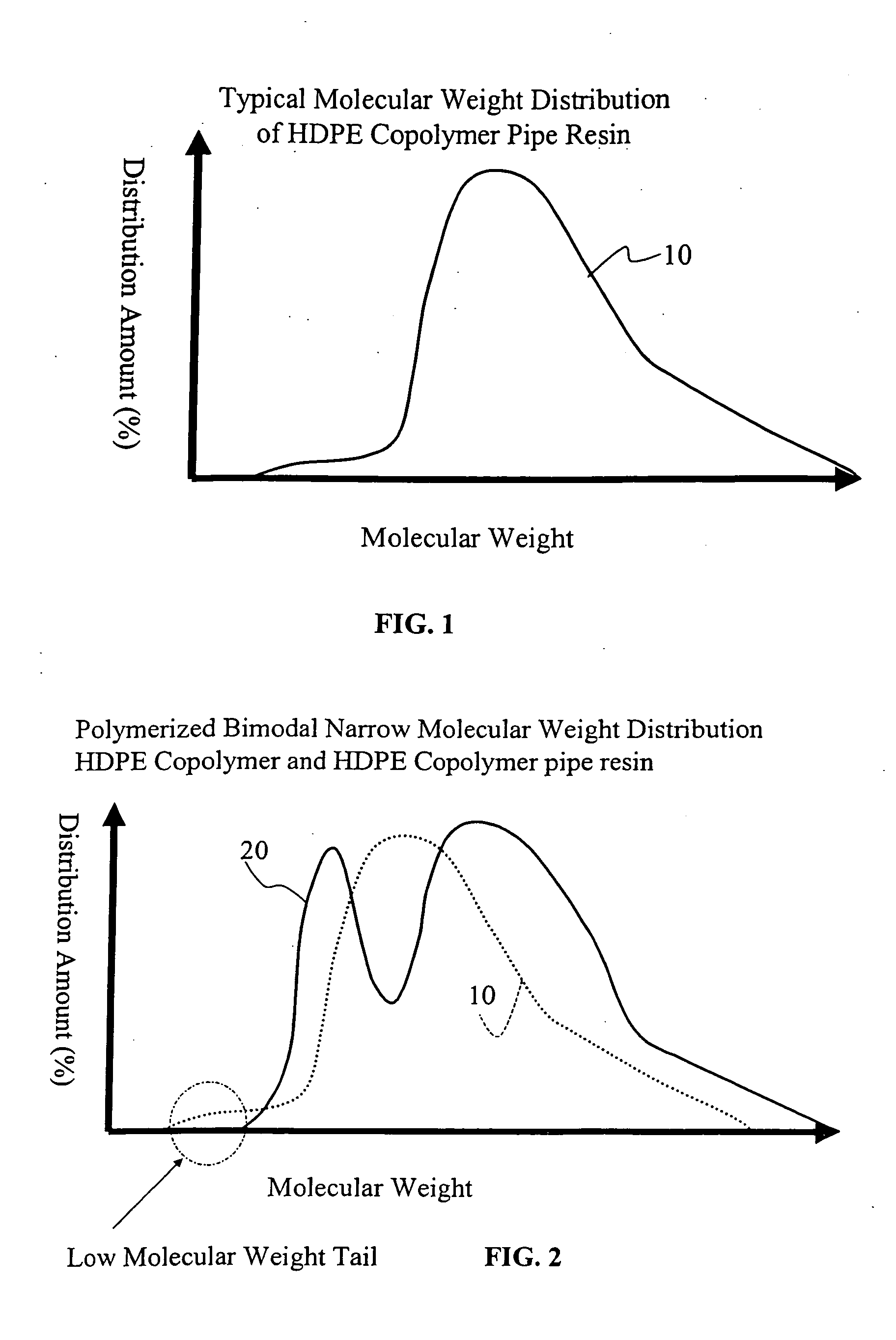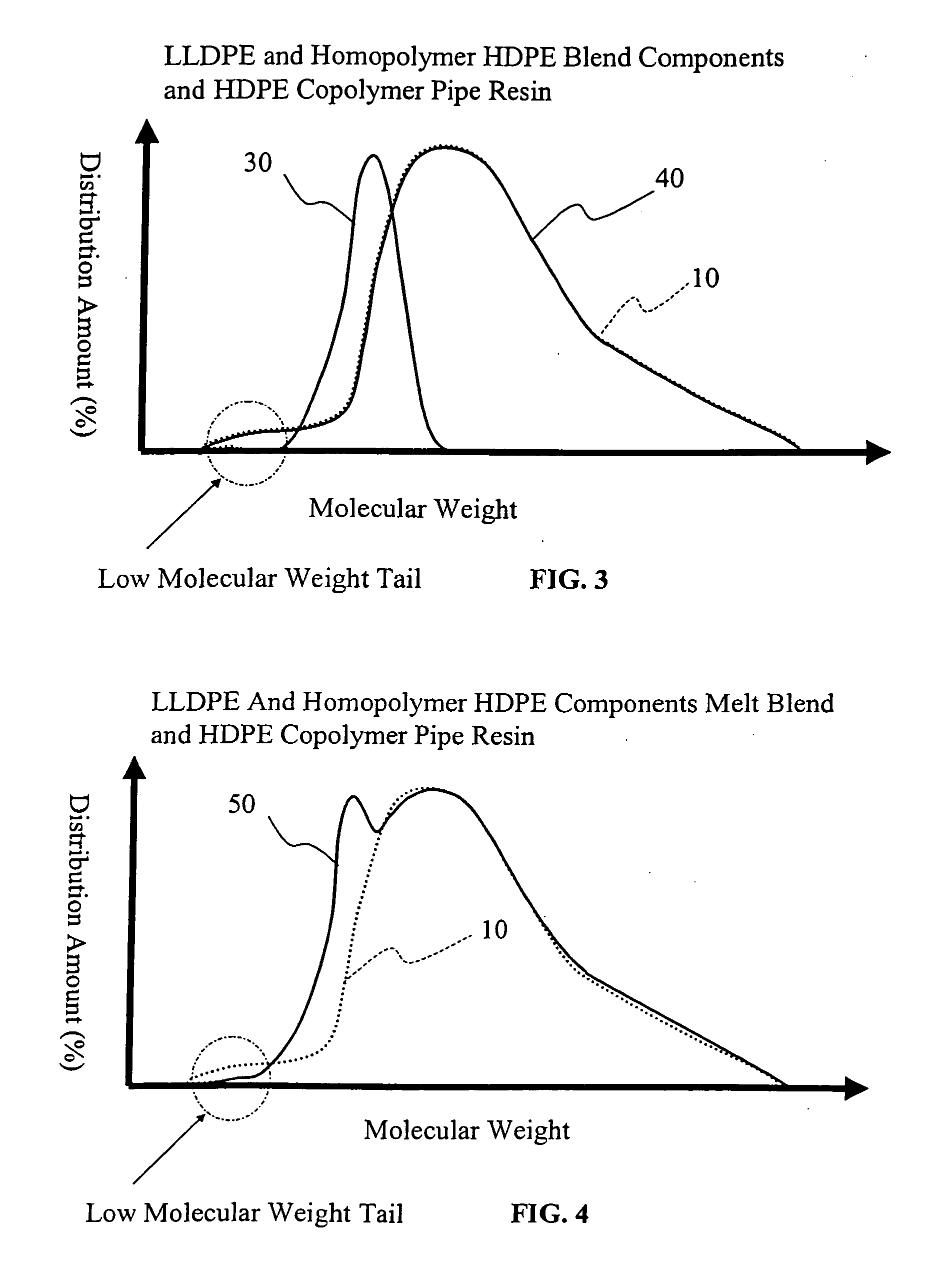Polyethylene melt blends for high density polyethylene applications
a polyethylene and blend technology, applied in the field of polyethylene melt blends for high density polyethylene applications, can solve the problem of densities of medium density polyethylene pipe blends, and achieve the effect of significant cost savings
- Summary
- Abstract
- Description
- Claims
- Application Information
AI Technical Summary
Benefits of technology
Problems solved by technology
Method used
Image
Examples
example 1
[0053]The percentages by weight of the polyethylene components used to produce a melt-blended polyethylene composition suitable for a producing a pipe having a diameter of about 24 to about 30 inches are listed below. The physical properties of the resulting melt-blended polyethylene composition are illustrated in Table 1.[0054]35% H-HDPE[0055]20% HMW-HDPE[0056]45% LLDPE
example 2
[0057]The percentages by weight of the polyethylene components used to produce a melt-blended polyethylene composition suitable for a producing a pipe having a diameter of about 12 to about 18 inches are listed below. The physical properties of the resulting melt-blended polyethylene composition are illustrated in Table 1.[0058]40% H-HDPE[0059]40% HMW-HDPE[0060]20% LLDPE
example 3
[0061]The percentages by weight of the polyethylene components used to produce a melt-blended polyethylene composition suitable for a producing a pipe having a diameter of about 36 to about 72 inches are listed below. The physical properties of the resulting melt-blended polyethylene composition are illustrated in Table 1.[0062]35% H-HDPE[0063]55% HMW-HDPE[0064]10% LLDPE
TABLE 1Physical properties of the melt-blended polyethylene compositionsTestMethodPropertyUnits(ASTM)Example 1Example 2Example 3Densityg / cm3D15050.9450.9520.955MFR (190° C.)g / 10 minD12380.40.250.15NCTLhoursD5397>24>24>24Tensile StrengthpsiD 638300032003500Flexural ModuluspsiD 790110,000135,000160,000Notched Izodft-lb / inD 256543Cell Classificationn / aD3350335400335400335400Flow Rate Ration / aD12388090110
PUM
| Property | Measurement | Unit |
|---|---|---|
| density | aaaaa | aaaaa |
| density | aaaaa | aaaaa |
| density | aaaaa | aaaaa |
Abstract
Description
Claims
Application Information
 Login to View More
Login to View More - R&D
- Intellectual Property
- Life Sciences
- Materials
- Tech Scout
- Unparalleled Data Quality
- Higher Quality Content
- 60% Fewer Hallucinations
Browse by: Latest US Patents, China's latest patents, Technical Efficacy Thesaurus, Application Domain, Technology Topic, Popular Technical Reports.
© 2025 PatSnap. All rights reserved.Legal|Privacy policy|Modern Slavery Act Transparency Statement|Sitemap|About US| Contact US: help@patsnap.com



